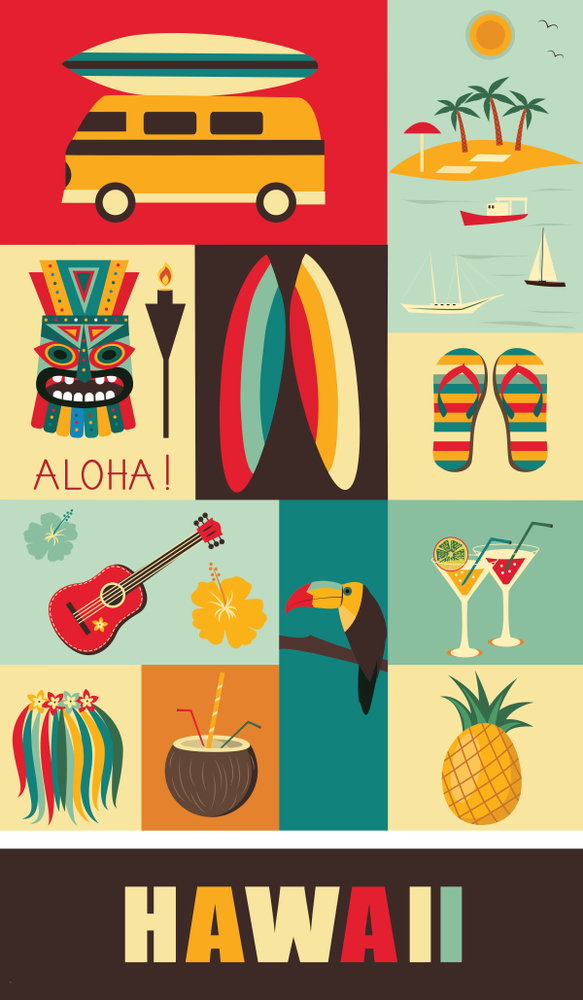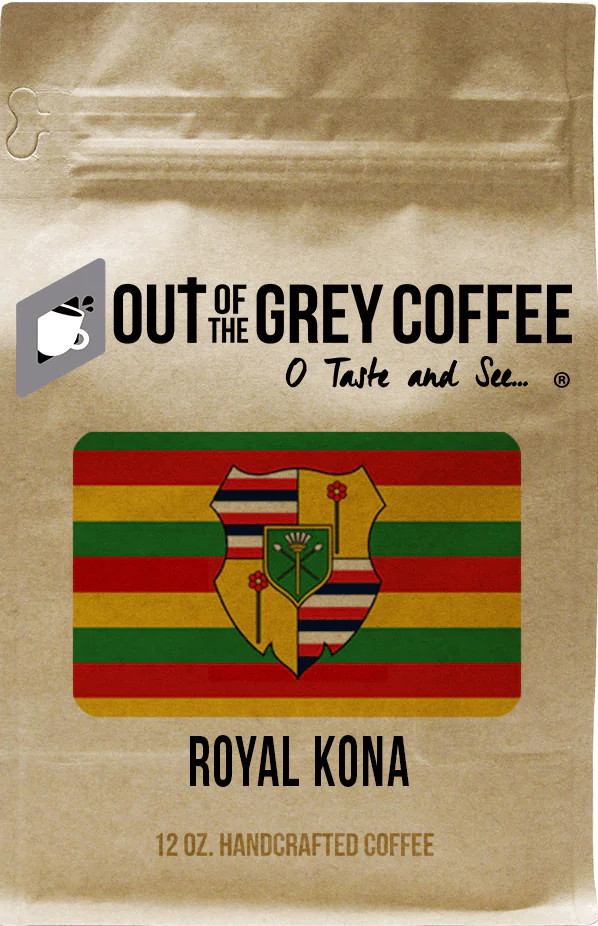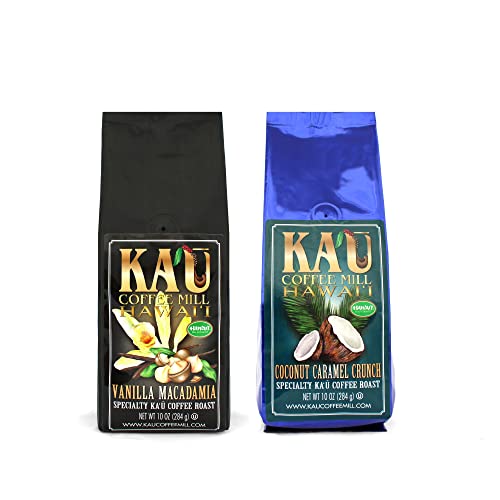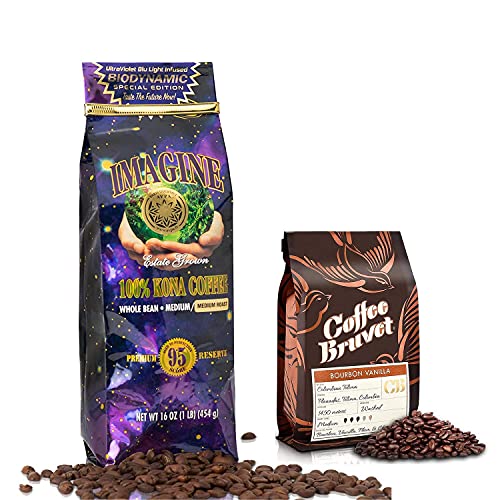If you’re a coffee enthusiast and planning a trip to Hawaii, you’re in for a real treat. Hawaiian coffee is known for its unique flavor and high quality, making it a must-try for any coffee lover. But before you start packing your bags, there are a few things you should know about traveling with coffee beans.
Now, Can You Bring Coffee Back From Hawaii?
To deal with your question first, the point with this post: can you bring coffee beans on a plane from Hawaii? The short answer is: Yes, you can.
Air travel regulations can be strict, and it’s important to make sure you follow the rules to avoid any issues at the airport. So you might be wondering: can you bring coffee beans on a plane from Hawaii? There was the short answer. Now let’s learn some more about it.
Yes, some of the links might be affiliate links from Amazon and other websites, and I might earn a little commission. But there are no added costs to anyone who buys anything from these sites. See more details in my privacy policy.
In this blog post we will look at the following:
The History of Hawaiian Coffee Beans
In this article, we’ll cover everything you need to know about Hawaiian coffee beans and air travel. From the types of coffee beans available in Hawaii to the best ways to pack and transport them, we’ve got you covered. So sit back, grab a cup of coffee, and let’s dive into the world of Hawaiian coffee and air travel.
Hawaii has a long and rich coffee history when it comes to coffee production. Coffee was first introduced to Hawaii in the early 19th century by a Frenchman named Don Francisco de Paula Marin. Marin brought coffee plants to the islands from Brazil and began growing them in the fertile volcanic soil.
The first commercial coffee plantation was established in 1828 on Oahu, and by the mid-1800s, coffee had become a major industry in Hawaii.
Short About Coffee From Hawaii
Today, Hawaii is the only state in the US that grows coffee commercially. The majority of coffee production in Hawaii takes place on the islands of Kona, Maui, and Oahu. The unique climate and soil conditions in these areas make them ideal for growing high-quality coffee beans.
Hawaii is known for its specialty coffee, which is grown on small family farms and hand-picked at peak ripeness. We talked about Honduran specialty coffee in an earlier post and what specialty coffee is. You can check it out again if you wonder.
I will write more about coffee from Hawaii in another post. I have dreamt of going there for a long long time. For now, I will have to be content with the coffee from the island.
So how do you store coffee beans to keep them fresh when you have to buy them and order, or if you bring them with you? Find out in my Best Way To Store Coffee Beans To Keep Them Fresh post.
What Makes Hawaiian Coffee Beans Unique
Hawaiian coffee beans are known for their unique flavor profile. They have a smooth, rich taste with a hint of sweetness and mild acidity.
The volcanic soil in Hawaii gives the coffee beans a distinctive flavor that can’t be found in coffee grown in other parts of the world.
The high altitude and cool nights in the coffee-growing regions of Hawaii also contribute to the unique flavor and quality of the beans.
One of the most famous types of Hawaiian coffee is Kona coffee. Kona coffee is grown exclusively on the slopes of the Mauna Loa volcano on the Big Island of Hawaii.
The volcanic soil and ideal growing conditions make Kona coffee one of the most sought-after and expensive coffees in the world.
Did you see the news about coffee with mushrooms?

The Different Varieties of Hawaiian Coffee Beans
In a world with so many different coffee flavors, what makes the one from Hawaii special? Well, Hawaiian coffee comes in a variety of different types and blends. The most popular types of Hawaiian coffee include Kona, Maui, and Oahu coffee.
Kona coffee is considered to be the most famous and sought-after Hawaiian coffee. It is grown exclusively on the slopes of the Mauna Loa volcano on the Big Island of Hawaii. Kona coffee has a smooth, rich taste with a hint of sweetness and a mild acidity.
Maui coffee is grown on the slopes of the Haleakala volcano on the island of Maui. Maui coffee has a medium body with a bright acidity and a hint of fruity sweetness.
Oahu coffee is grown on the island of Oahu and has a mild, balanced flavor with a slightly nutty taste.
Another interesting continent to examine is the African. Learn more in our guide of coffee from Africa. I am to try coffee from all over the world!
The Best Hawaiian Coffee Brands to Try
In a post about coffee and Hawaii, I can not help myself from recommending a few brands. If you’re looking to try some of the best Hawaiian coffee, there are several brands that you should consider.
Here are some of the top Hawaiian coffee brands to try:

Royal Kona
A well-established Hawaiian coffee brand that has been operating for over 50 years. They offer a variety of coffee blends and single-origin options, including their renowned Kona coffee. Royal Kona prides itself on producing smooth and flavorful coffee, utilizing the unique growing conditions found in Hawaii.
Out of the Grey Coffee
These guys offers the Royal Kona Estate Extra Fancy, a single-origin Hawaiian coffee. It features a deep, sweet fruit-toned complexity with flavors of dark chocolate, musky lily, strawberry, watermelon, and roasted almond. Grown at an altitude of 1800-2000 meters, this specialty coffee boasts a full, syrupy mouthfeel and is considered a luxurious choice among Hawaiian coffees.
Koa Coffee
They specialize in 100% Kona coffee, which is grown on the slopes of the Mauna Loa volcano. Koa Coffee* offers a range of coffee options, including medium and dark roasts.
*Se some facts on the Koa coffee plantation under the image.
Maui Coffee Company
Based in Maui, Hawaii. They produce coffee grown on the slopes of the Haleakala volcano. Their coffee beans have a medium body, bright acidity, and often feature fruity sweetness. They offer a variety of blends and single-origin coffees.
Lion Coffee
A long-established Hawaiian coffee brand that has been around since 1864. They are known for their classic Hawaiian coffee flavors and offer a wide range of blends and roasts. Lion Coffee aims to capture the essence of Hawaii in their beans.
Hula Daddy
A boutique coffee brand that focuses on producing high-quality, award-winning coffee. Their beans are grown on the slopes of the Mauna Loa volcano and hand-picked at peak ripeness. Hula Daddy emphasizes quality control throughout the entire coffee production process, resulting in exceptional flavors and aromas.
Each of these brands offers a unique flavor profile and high-quality coffee beans that are sure to impress even the most discerning coffee connoisseur. You can see my Kauai Coffee Decaf Review here if you like a decaf alternative.
Koa Coffee Plantation

Koa Coffee Plantation is a coffee company that roasts and sells premium Hawaiian coffee, including 100% Kona coffee from the slopes of Mauna Loa volcano. The company was founded in 1997 by Marin Artukovich, who started as a small backyard grower and expanded to produce over 700,000 pounds of coffee per year.
Koa Coffee Plantation has won several awards for its quality and flavor, such as the Gevalia Cupping Competition, the PCCA Coffee of the Year, and the Forbes “Top 10 Coffees of the World”. The company offers a variety of coffee products, such as estate Kona coffee, peaberry Kona coffee, organic Kona coffee, and decaf Kona coffee. So go ahead and checkout for example this Koa Coffee Plantation on its official website.
How to Brew the Perfect Cup of Hawaiian Coffee
Brewing the perfect cup of Hawaiian coffee is all about using the right brewing method and equipment. Here are 5 tips for brewing the perfect cup of Hawaiian coffee:
1. Use freshly roasted coffee beans: Freshly roasted coffee beans will have a richer flavor and aroma than beans that have been sitting on the shelf for weeks. I have an article for you on grinding of coffee to get that right.
2. Use high-quality water: The quality of the water you use can have a big impact on the taste of your coffee. Use filtered or bottled water for the best results.
3. Use the right brewing method: There are several different brewing methods you can use to make Hawaiian coffee, including drip coffee, French press, and pour-over. Choose the method that works best for you and your taste preferences.
4. Use the right amount of coffee: The amount of coffee you use will depend on your brewing method and the strength of coffee you prefer. As a general rule, use 1-2 tablespoons of coffee per 6 ounces of water. And here is a free coffee to water ratio calculator.
5. Use the right temperature: The ideal brewing temperature for Hawaiian coffee is between 195-205 degrees Fahrenheit, or just under boiling point. You don’t want to overheat the coffee beans.
Tips for Traveling: Can You Bring Coffee Beans On a Plane From Hawaii?
So, to the point with this post: can you bring coffee beans on a plane from Hawaii? The short answer is: Yes, you can.
If you’re planning to bring some Hawaiian coffee beans back home with you, there are a few things you should keep in mind. Here are some tips for traveling with Hawaiian coffee beans:
- 1. Check airline regulations: Before you pack your coffee beans, make sure you check the airline regulations for carrying food items on a plane. Some airlines may have restrictions on bringing food items on board.
- 2. Pack the coffee beans properly: To prevent the coffee beans from getting crushed or damaged during transit, pack them in airtight containers or resealable bags.
- 3. Label the coffee beans: Make sure you label the coffee beans with the origin and type of coffee so that you can easily identify them when you get home.
- 4. Store the coffee beans properly: Once you get home, store the coffee beans in a cool, dry place away from direct sunlight.
Airline Policies for Carrying Coffee Beans on a Plane
There are really two things to keep in mind when traveling. One is the official government rules and another is the airline companies themself. Here is from the US government on the matter of bringing coffee.
Airline policies for carrying food items on a plane can vary depending on the airline and the destination. In general, coffee beans are allowed on a plane as long as they are properly packaged and labeled. However, it’s always a good idea to check with the airline before you travel to make sure you are following their specific regulations.
What about, Can You Bring Coffee to Hawaii?
Well, the question “Can you bring coffee to Hawaii?” is interesting too. And if you are really into coffee, you might like to bring your favorite blend. However, the state of Hawaii has strict agricultural regulations in place to protect its unique ecosystem and prevent the introduction of pests and diseases that could harm local agriculture. These regulations extend to coffee, which is considered an agricultural product. So there are two things to have in mind, green beans or roasted beans.
1, Green beans
If you plan to bring green (unroasted) coffee beans to Hawaii, you may need to obtain an Agricultural Inspection Permit from the Hawaii Department of Agriculture (HDOA). This permit ensures that the beans are free from pests and diseases. It is important to contact the HDOA or visit their official website to obtain the most up-to-date information and necessary permits.
2. Roasted beans
On the other hand, bringing roasted coffee to Hawaii is generally less restrictive. However, it is still important to declare any agricultural products, including roasted coffee, at the agricultural inspection station upon arrival. Inspectors will verify that the coffee poses no threat to Hawaii’s agricultural ecosystem. While it is unlikely to encounter any issues, it’s best to be prepared and comply with the regulations.
So, while you can bring your own coffee to Hawaii, it’s worth considering exploring the local coffee scene. As we have seen in this post, Hawaii is famous for its Kona coffee, grown on the slopes of the Big Island’s volcanic terrain. Many coffee farms and plantations offer tours and tastings, providing a unique opportunity to learn about the coffee-making process and savor the flavors of locally grown beans. Supporting the local coffee industry not only adds to your experience but also helps sustain the islands’ economy.
Where to Buy Hawaiian Coffee Beans
If you’re looking to buy some high-quality Hawaiian coffee beans, there are several places you can go. Many coffee shops and retailers in Hawaii sell Hawaiian coffee beans, and there are also several online retailers that specialize in Hawaiian coffee. Here are some places to buy Hawaiian coffee beans:
– Maui Coffee Company
– Hula Daddy
– Royal Kona
–Amazon got a big selection too, as you see some of them under here:
So even though you can bring coffee beans on a plane from Hawaii, you can still enjoy the coffee from the Island without even going there, if you order online.
Have you ever wondered: how many coffee plants do I need to cover my daily coffee dose? Here you find a pretty cool Coffee Beans Per Cup Calculator.
Conclusion
Hawaiian coffee is a unique and high-quality coffee that is a must-try for any coffee lover. If you’re planning a trip to Hawaii, make sure you take the time to try some of the best Hawaiian coffee brands and varieties. Maybe you found this article searching “Can you bring coffee to Hawaii?”, but now you changed your mind, and like to try the local good stuff.
And if you want to bring some coffee home with you, make sure you follow the tips for traveling. And on top you got the answer to your question: can you bring coffee beans on a plane from Hawaii? With the right preparation and care, you can enjoy the rich, smooth taste of the best Hawaiian coffee beans long after your trip has ended.
We also had a deeper dive into the Koa Coffee Plantation. Hope you liked it and want to go visit them one day.
FAQ
Can you take coffee beans through airport security?
Yes, you can generally take coffee beans through airport security. However, it’s important to check the specific regulations of the airport and the airline you are traveling with, as there may be restrictions on carrying food items. It’s recommended to pack the coffee beans properly and follow any guidelines provided by the airport or airline.
Can I hand carry coffee beans on a plane?
Yes, you can usually hand carry coffee beans on a plane. Again, it’s crucial to check the regulations of the airport and airline you are traveling with. Ensure that the coffee beans are properly packaged and labeled, and comply with any size or quantity restrictions set by the airline.
Do I have to declare coffee beans at customs?
In many cases, you may be required to declare coffee beans at customs when entering a country. It’s important to familiarize yourself with the customs regulations of your destination country, as some places have restrictions on bringing in agricultural products. If in doubt, declare the coffee beans to avoid any potential issues or penalties.
How much coffee beans can I bring into the US?
The amount of coffee beans you can bring into the US depends on your residency status. Visitors are generally allowed to bring up to 100 grams (3.53 ounces) of roasted coffee or 1,000 grams (2.2 pounds) of green/unroasted coffee for personal use. Residents may have higher limits, so it’s recommended to check the specific regulations of your country of origin and the US Customs and Border Protection (CBP) for accurate information.
Does coffee need a food label?
For personal use, coffee beans typically do not require a food label. However, if you intend to sell or distribute coffee beans commercially, different regulations may apply. It’s important to comply with labeling requirements set forth by the Food and Drug Administration (FDA) and other relevant authorities in order to ensure proper information is provided to consumers.








